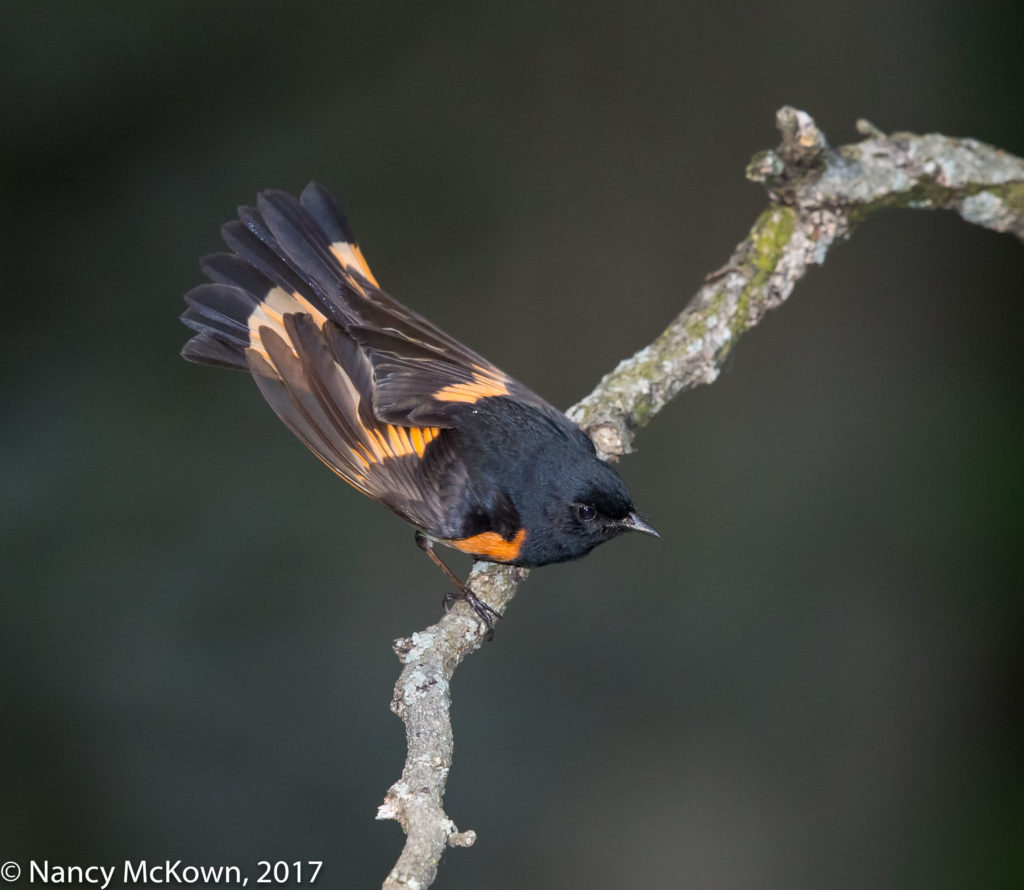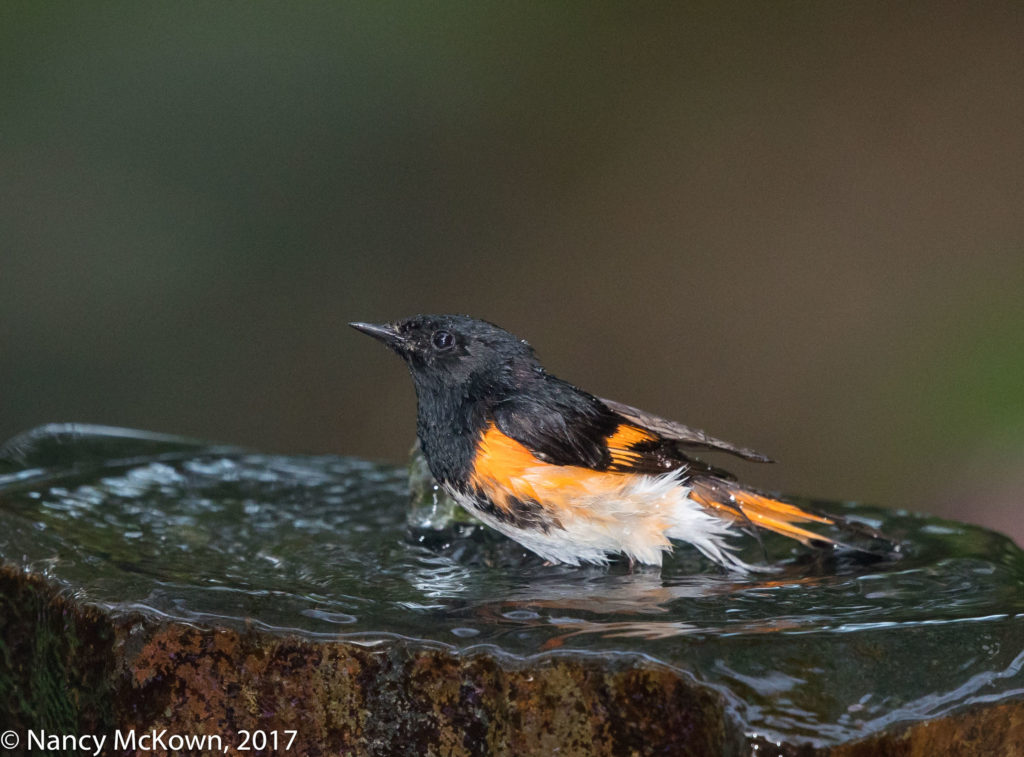Photographing An American Redstart Warbler
It’s been partially sunny with cool refreshing winds for 5 days now and the forecast predicts much the same for the next three days. Tree canopy above the house is fully leafed out. Petals from the tops of the blooming locust trees float into the house onto the carpet. Plants are looking dry and droopy. The few mosquitos I encounter are sluggish.
Squirrels and chipmunks scurry along the cedar mulch paths to the fountain to get a drink from the water flowing down. Titmice and Robins pay me no mind as they bathe and drink from the bubbler. This Spring, a pair of American Redstart Warblers have returned to nest in our yard. The male, adorned in his spring finery, visits the fountain often.

He’s Shaking and Fanning His Feathers
To Dry them Before He Goes In for
Another Dip. ISO1600; f/9; 1/250 Second
High in the Treetops
Here on ground level, the only warblers we have noticed are the Redstarts. My bird books confirm that 43 wood warblers species nest in MI… most of them arboreal. An arboreal bird is defined as: “A type of bird that relies on trees and dense foliage, spending much of its life in trees and rarely either descending to the ground or otherwise leaving the cover of the canopy.”
A wide diversity of highly specialized birds and other creatures live in this upper layer habitat created from the crowns of trees. This obscured community rarely needs to venture down to a ground level water source. They drink from the near billions of lighter-than-air floating water droplets carried in the fog and intercepted by tree leaves.
Is it too much to hope that other species of warblers actually live high in our tree canopy and that they might one day come down?
Hope Springs Eternal
I set up my camera, 500mm lens, 1.4 tele extender, and bracketed flash on to the tripod inside the house (with one tripod leg outside on the step of the deck). Sunlight on the deck slowly transitions, uneven and patchy, as the morning sun rises in the sky. I set the focus limiter switch on the lens barrel to restrict the len’s autofocus to 3.7m-10 m.

Luxuriating in the Fountain.
ISO1250; f/7.1; 1/250 Second
ISO Settings With Flash
I keep my Canon camera in Manual (M) mode, but set the flashgun to Auto. E-TTL II will compensate as the exposure parameters change with the shifting light. I play around with the ISO settings, raising it to brighten the background. If I leave the camera’s ISO setting in auto mode, the camera automatically sets ISO to 400 when a flash is attached and activated. (NOTE: There are times when the flash can not recycle fast enough to keep up with the shudder action. If Auto ISO is set, the ISO will rise to compensate and correct exposure when the flash does not fire. If I set the ISO to a specific value, the camera will be in complete manual mode and will not override the aperture, shutter, and ISO set by the photographer. In this instance, the camera will still take the shot, but the images will be underexposed.)
Working on Glare Control
Mid day rolls in. The sun is casting glare and shadow and the blinkies are flashing through the viewfinder. I can feel the hot sun on my face as it clears the trees and bears down on the house. The brim of my hat does a good job blocking the sun from my eyes, but whenever I try to place my eye on the eyecup, the hat pushes back on my head, moving the camera and tripod. The hat comes off.
Instead of packing up, I consider inserting the circular polarizer into the lens. Then, possibly I could effectively boost color and contrast in an otherwise washed out scene. The reduction of light with the polarizer inserted sends the ISO soaring. For birds I can only lower the shutter speed so much….so I turn on the flash with extender again. I rotate the polarizer to get the maximum reflection reduction, but the resulting images shone on the LCD screen come back full of glare. The polarizer can not eliminate the glare caused by the elevated flash gun. That beam probably needs its own polarizing sheet. Too much hassle for such a beautiful day. I power down the camera and flash and put everything away.








